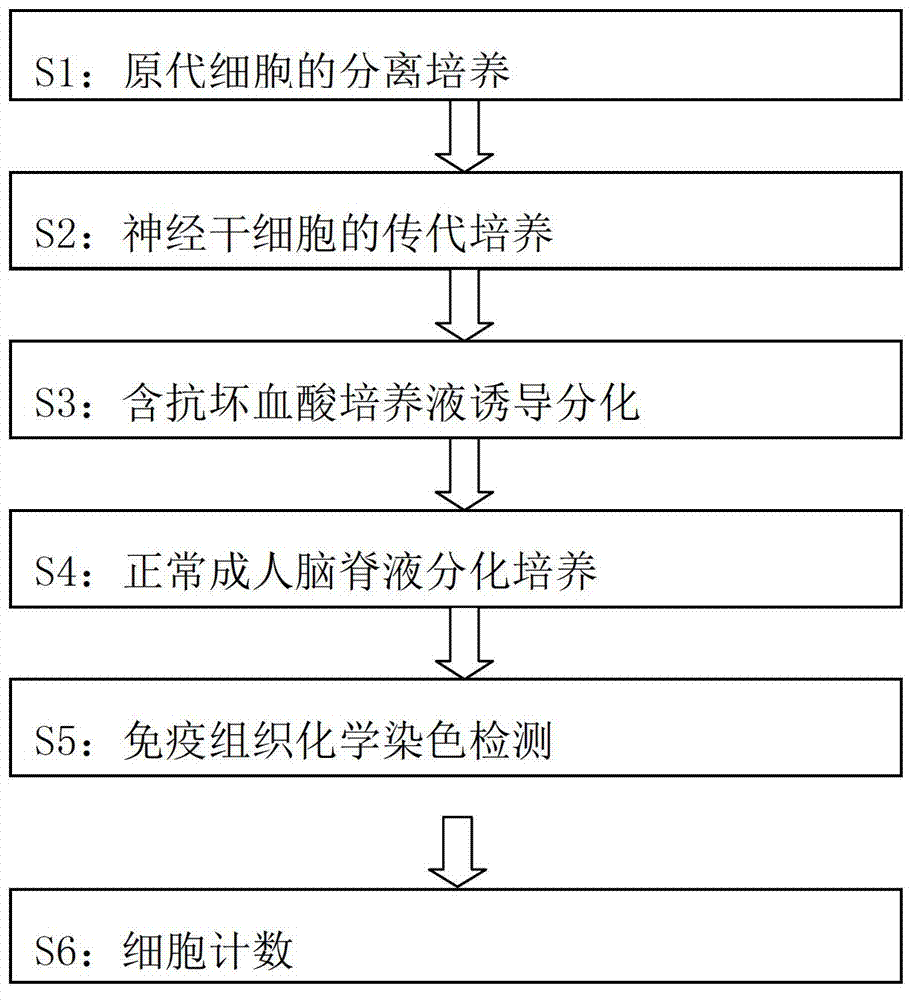Method for directionally differentiating neural stem cells in human embryo midbrain into dopaminergic neuron in vitro
A neural stem cell and dopaminergic technology applied in the biological field to achieve the effect of increasing the success rate of induction
- Summary
- Abstract
- Description
- Claims
- Application Information
AI Technical Summary
Problems solved by technology
Method used
Image
Examples
Embodiment Construction
[0015] Main experimental instruments: ultra-clean workbench (Suzhou Sujing Antai Co.), inverted microscope (Olympus CK40), fluorescence microscope (Olympus BX51), CO 2 Incubator (REVCO), 75cm 2 Petri dishes (Corning, NY). Preparation of cell culture reagents and culture medium: DMEM / F12, B27 (Gibco), EGF (Serotec) and bFGF (Chemicon International), fetal bovine serum (Gibco). Serum-free medium DMEM / F12(1:1)+5%Fcs; serum-free medium DMEM / F12(1:1)+B27(1:50)+EGF(20ng / mL)+bFGF(20ng / mL ). Immunohistochemical antibodies: the primary antibody was rabbit anti-human NF antibody (Sigma), rabbit anti-human GFAP antibody (Sigma), rabbit anti-human TH antibody (Sigma), and the secondary antibody was FITC goat anti-rabbit fluorescent secondary antibody (Chemicon).
[0016] The method for in vitro directed differentiation of neural stem cells derived from human embryo midbrain into dopaminergic neurons comprises the following steps:
[0017] S1: Isolation and culture of primary cells: ta...
PUM
 Login to View More
Login to View More Abstract
Description
Claims
Application Information
 Login to View More
Login to View More - R&D Engineer
- R&D Manager
- IP Professional
- Industry Leading Data Capabilities
- Powerful AI technology
- Patent DNA Extraction
Browse by: Latest US Patents, China's latest patents, Technical Efficacy Thesaurus, Application Domain, Technology Topic, Popular Technical Reports.
© 2024 PatSnap. All rights reserved.Legal|Privacy policy|Modern Slavery Act Transparency Statement|Sitemap|About US| Contact US: help@patsnap.com








